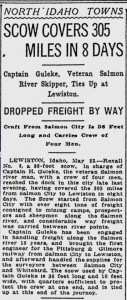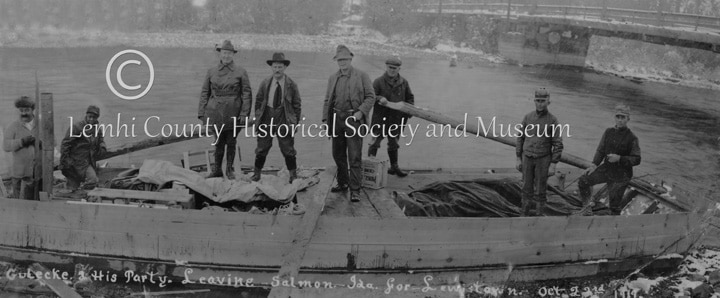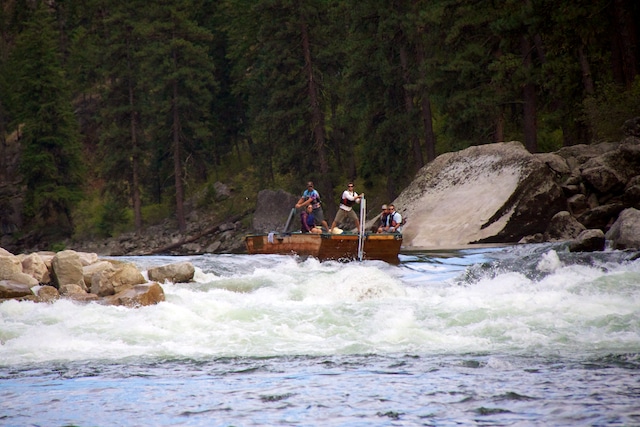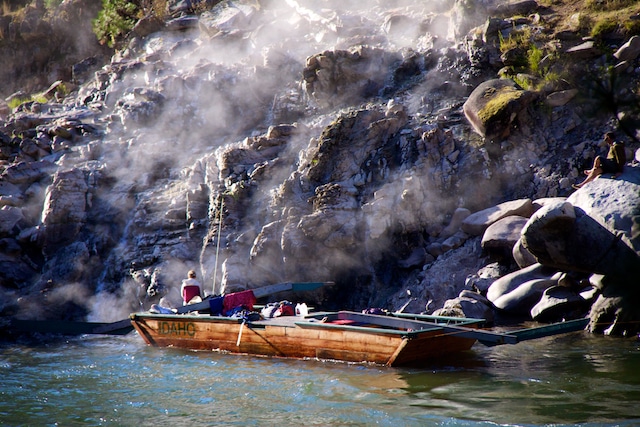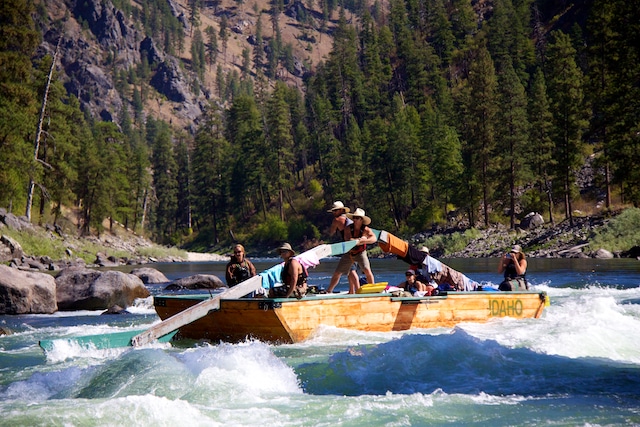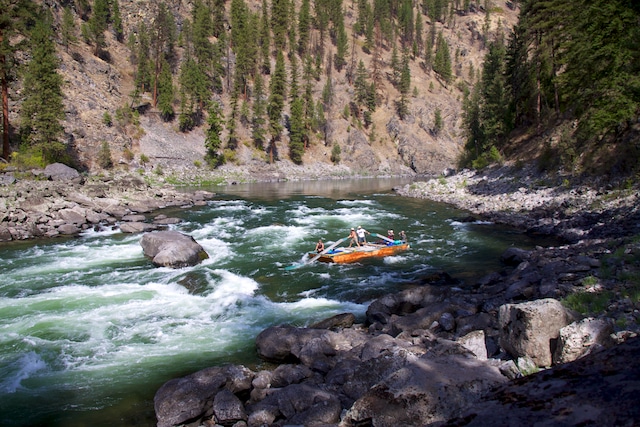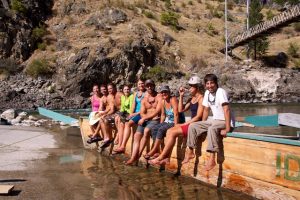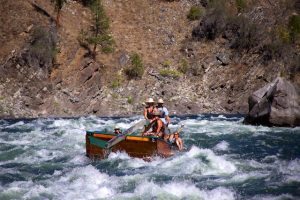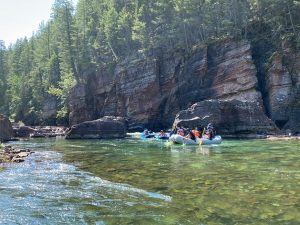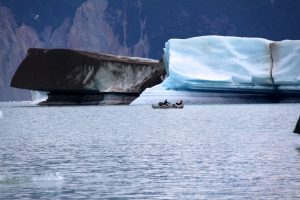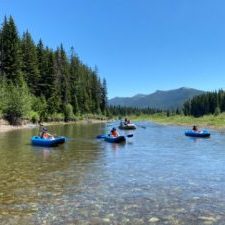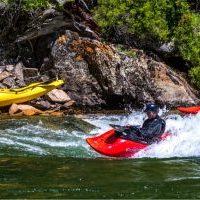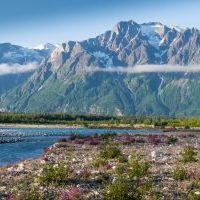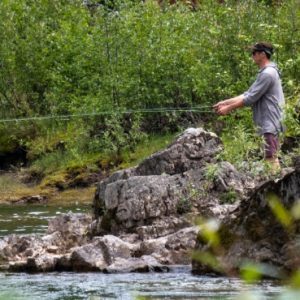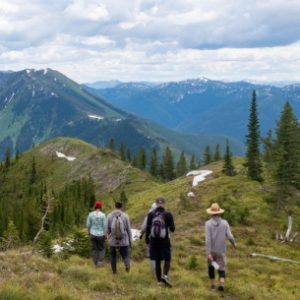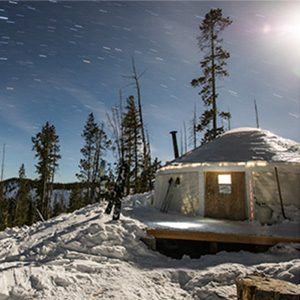Historic Scow Revisits Main Salmon
November 15, 2011
What is a scow? A scow is a large wooden boat, usually around 30ft long and 9 ft wide. These large crafts were designed as cargo boats to deliver supplies and equipment along the Salmon River from Salmon City to Lewiston. This trip was 305 miles, with many challenges to face each journey. These cargo giants supplied homesteaders, miners, sheepherders, and anyone else trying to scrape out a living in the rugged Salmon River country. Harry Guleke or “Cap Guleke” was one of the most well known drivers of these early scows. He was known for being to best boatman of his time, running cargo for more than 18 years and racking up as many as 200 trips down the Main Salmon! Guleke and crew delivered ninety thousand pounds of equipment and supplies to the Salmon River Mining Company at Five Mile Bar, and nearly three million pounds of cargo during is career! Guleke and the wooden Salmon scow became well known when Field and Stream published an article about him in 1921. Newspaper articles and stories of the old days and historic boatman fill the Salmon Historical Museum. These boats were built in Salmon, heading downstream never to be seen again, giving the Main Salmon the nickname “The River of No Return.” The boatman would return for the next trip via round about railroad travel. Upon return to Salmon, they would start building a new boat in preparation for another departure from Salmon City. Guleke was a very well liked man and would always draw a crowd upon his departure. Other old timers like Johnny McKay would take a year to three years on this Main Salmon river journey. Often building a winter shelter of borrowed wood from the scow. Over these long trips, he would try to placer mine enough gold to buy supplies and build a boat for the next trip. Johnny McKay spent forty-eight years on the River of No Return, completing twenty trips. Inscriptions left on rocks by early boatman are the only reminder of these early days; many are at Barth Hot Springs (known earlier as Guleke Hot Springs). Whether hauling cargo or spending years placer mining on the banks of river, these early characters pioneered river life on the Salmon River!
“Big Boat Idaho,” was built by local long time river-runner Jerry Myers of Salmon, Idaho. After much time and research, Jerry and his friends came up with the plans for a close to exact replica of the aforementioned historic boats. A few years after construction the scow made scenic float trips around town, but never passed the end of the road. The boat was parked in downtown Salmon for the last few years going unused and baking in the summer sun. Jon Green, a local Salmon City river runner and guide, decided that the boat had been parked long enough and needed to see the river once again. Jonny has a history degree and has always been very interested in the history of the Salmon River Canyon. He made the deal and was soon the proud new owner of a wooden scow, named “Big Boat Idaho.”
Captain Jonny and co-captain Shane Moser have been longtime friends of mine. When I got the invite to join their scow trip, I did not want to miss this opportunity! Nine friends (mostly river guides) loaded up Big Boat Idaho and headed for Corn Creek, the end of the road! Over the next seven days, I experienced the Main Salmon in a new way, a flashback in time. The stories of the historic scow trips I have read now come with a new understanding, and more appreciation for these old time river-runners and pioneers of the Main Salmon.
[youtube]B6nVidGe0ZU[/youtube]
I hope you enjoy the photos and video from the “Big Boat Idaho” trip.
~ Seth Tonsmeire
